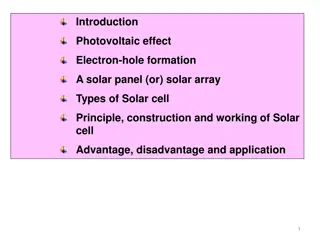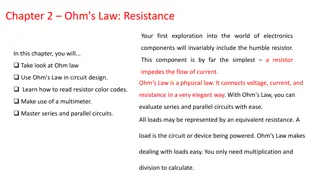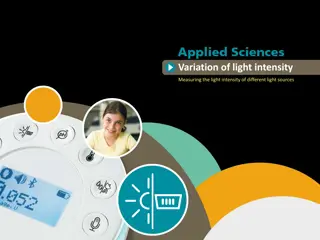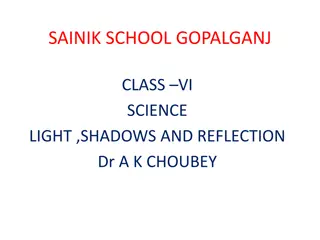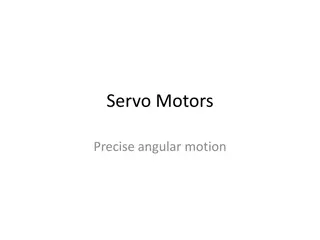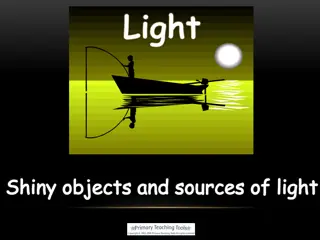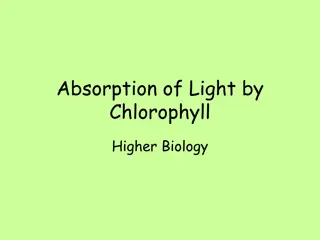Light Tracking Servo System Using Cadmium Sulfide Resistors
Introduction to an Arduino-based light tracking system using Cadmium Sulfide light-dependent resistors. The system tracks the maximum light intensity and automatically adjusts its direction towards the brightest source. It includes an Arduino-based Lux Meter and specifications such as DAC resolution, CdS LDR spectrum peak, ADC response, and Lux range. The project involves developing a light tracking model and the potential use of a solar panel for sun tracking purposes. The schedule outlines the design, testing, data collection, variable adjustments, and final presentations.
Download Presentation

Please find below an Image/Link to download the presentation.
The content on the website is provided AS IS for your information and personal use only. It may not be sold, licensed, or shared on other websites without obtaining consent from the author.If you encounter any issues during the download, it is possible that the publisher has removed the file from their server.
You are allowed to download the files provided on this website for personal or commercial use, subject to the condition that they are used lawfully. All files are the property of their respective owners.
The content on the website is provided AS IS for your information and personal use only. It may not be sold, licensed, or shared on other websites without obtaining consent from the author.
E N D
Presentation Transcript
Light Tracking Servo System Using Cadmium Sulfide Light Dependent Resistors Brandon Agtarap and Branden Nakahara
Introduction Arduino Based Light Tracking System o Tracks for the maximum intensity of light o When there is a decrease in intensity of light, it automatically changes its direction towards the brightest source o Uses Cadmium Sulfide light dependent resistors Arduino Based Lux Meter o Luminosity sensor using an advanced digital light sensor Lux is the SI unit of illuminance and luminous emittance Applications o Will be used to develop a light tracking system model that follow the movement of light o May replace the CdS resistors with a solar panel that can be used for a sun tracking system
Specs DAC: o Resolution: (5 V) / (210) = 5.0 mV o 6 Analog inputs o Pins 9 & 10 provide 8-bit PWM output CdS LDRs: o Spectrum Peak Value: 540 nm (yellow-green light) o At ambient room light: 20 ms rise time and 30 ms fall time o = log(R10/R100) ADC: o Approximates Human Eye Response filters out the 50-60 Hz lighting ripple o 100 kHz or 400 kHz o 0.1 to 40,000 Lux range 1 Lux = 1.46e-7 watts/cm2 ~ full moon on a clear night
Schedule Tuesday Wednesday Thursday Friday Design Review Testing of model using different light sources Data collection from lux meter Final Testing Change variables of circuit to find a more ideal system Final Presentations

